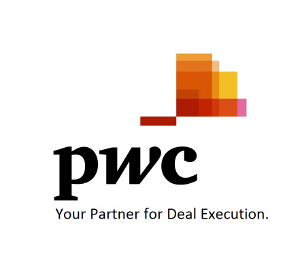Cost of Capital for a Business
19 March :: Capital for a small business is simply money. It is the financing for the small business or the money used to operate and buy assets. Cost of capital is the cost of obtaining that money or financing for the small business. The cost of capital is also called the hurdle rate.
Should very small businesses even worry about their cost of capital? The answer to that is absolutely yes! Even very small businesses need money to operate and that money is going to cost something. Companies want that cost to be as low as possible.
What is Capital?
Capital is the money businesses use for financing their operations. The cost of capital is simply the rent, or interest rate, it costs the business to obtain financing. In order to understand cost of capital, you must first understand the concept of capital. Capital for very small businesses may just be the supplier credit they rely on. For larger businesses, capital may be the supplier credit and longer term debt or liabilities, which are the firm’s liabilities.
If a company is public or takes on investors, then capital will also include equity capital or common stock. Other equity accounts will be retained earnings, paid-in capital, perhaps preferred stock.
Why is Capital Important?
In order to build new plants, buy new equipment, develop new products, and upgrade information technology, businesses have to have money or capital. For every decision like this, a business owner or Chief Financial Officer (CFO) has to decide if the return on the investment is greater than the cost of capital or the cost of the money it takes to invest in the project.
Business owners do not usually invest in new projects unless the return on the capital they invest in these projects is greater than or at least equal to the cost of the capital they have to use to finance these projects. Cost of capital is the key to all business decisions.
What is the Cost of Capital?
A company’s cost of capital is simply the cost of money the company uses for financing. If a company only uses current liabilities and long-term debt to finance its operations, then it uses debt and the cost of capital is usually the interest rate on that debt.
If a company is public and has investors, then cost of capital gets more complicated. If the company only uses funds provided by investors, then the cost of capital is the cost of equity. Usually, this type of company has debt but it also finances with equity financing or money that investors supply. In this case, the cost of capital is the cost of debt and the cost of equity.
The combination of debt and equity financing for a company is the company’s capital structure.
What is Return on Capital?
Return on capital is the amount of profit you earn out of a business or project as compared to the amount of capital you invested. The key to cost of capital for a company is that a company’s return on capital must always equal or exceed the cost of capital for any project in which the firm wants to invest. In other words, the company’s investment rate of return (return on capital) must equal or exceed their financing rate of return (cost of capital) in order for the firm to be profitable.
What Composes the Cost of Capital
One component of the cost of capital is the cost of debt financing. For larger businesses, debt usually means large loans or bonds. For very small companies, the debt can mean trade credit. For either, the cost of debt is the interest rate the company pays on debt.
Another component of the cost of capital is the cost of equity financing if your company is a public company; in other words, if you have investors in your company who provide money in exchange for an ownership stake in the company.
There are several components of the cost of equity capital. First, there is the cost of retained earnings or the money that the company invests back into the company, instead of paying out dividends. Next, there is the cost of new common stock or stock that the company issues to raise money. Last, the company may even issue preferred stock to raise money.
For very small firms, the cost of capital may be much simpler. There are advantages and disadvantages to both debt and equity financing, including cost, that any business owner must consider before adding them to the capital structure of the company. Very small firms may just use short term debt, in which case we have to establish a cost for this capital component.
The Company’s Weighted Average Cost of Capital
Once the business owner understands the concepts of capital and cost of capital, the next step is to understand weighted average cost of capital. Each capital component is a certain percentage of the company’s capital structure. In order to arrive at the true cost of capital for a business firm, the owner must multiply the percentage of the company’s capital structure for each component by the cost of that component and sum them.
Summary of Cost of Capital
Before a company can engage in buying assets or obtaining financing for its operations, it must make some determination of its cost of capital — what it really costs the firm for the money it has to have to for all its financing. That cost of financing must never exceed its return on capital.
Here is a cost of capital video series that you may find helpful. It helps put the return on capital and cost of capital in real world terms for you.

Recent Comments